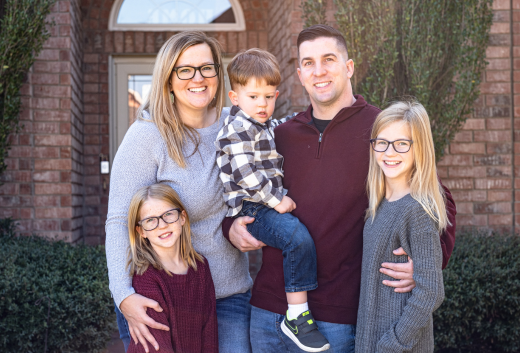Life as a military spouse is just different. Deployments, separations for long periods of time, living far away from family, moving across the country or around the world every few years, underemployment, new location adjustments for children, financial ups and downs, and the list goes on. But they are resilient, and they persevere. In many cases, the result is a stronger family, a stronger marriage, and a stronger sense of self. One thing is certain about military life: your servicemember will face transitioning out of the military. Just as you did while they were active, you will support and encourage your partner through this new journey.
For instance, your servicemember will participate in the Transition Assistance Program (TAP). They will learn about the benefits they have earned through their service, prepare for employment in the civilian world and much more. It’s recommended you also participate in the classes offered so you can learn about decisions that need to be made and the benefits available to you and your family. To help you get started, we’ll examine some of them below.
In this article we will focus on SBP, VA Benefits, and Life Insurance, all of which are important to understand in working toward financial independence after you transition back to civilian life.
Survivor Benefit Plan (SBP) through Defense Finance and Accounting Services (DFAS)
If your servicemember is eligible for military retirement, then the government-subsidized Survivor Benefit Plan is available to your family. It is a permanent choice, once you have made the election, however, you have between 24 and 36 months to disenroll from SBP and there will be no opportunity to make changes later. To help make this decision, there are some SBP basics you should know: the premium payment of 6.5% of the gross military retired pay and is deducted pre-tax from the retired pay. Coverage begins immediately following retirement. Once the retiree has made 360 months of payments, the plan is considered paid in full.
Additionally, there is no age or medical requirement for a spouse to qualify, and the premium payments and the SBP annuity are COLA-adjusted. The downside to this benefit is there is no cash value or residual benefit. If you predecease the retiree, there is no return of the premiums paid, and it cannot be transferred to anyone other than a subsequent spouse after your death. Once you begin to receive the SBP annuity following the death of the retiree, you will continue to receive this payment until your death. If you remarry before age 55, the SBP annuity will stop (you can restart SBP again if that marriage ends in divorce or death).
SBP premiums and benefit depend on the base amount, which is the dollar amount of coverage that is elected. It can range to as low as $300 to the full amount of the retired pay. The SBP annuity will be 55% of that base amount. For example, if the retiree elects to have the annuity base amount be the full retired pay and that gross monthly amount is $5,000, then the SBP annuitant would receive $2,750 each month after the death of the retiree ($5,000 x 0.55 = $2,750). The recipient of the SBP annuity will need to complete and submit claim forms to DFAS to begin receiving this benefit after the retiree’s death. It does not happen automatically and can take 2 to 3 months to begin receiving the direct deposit.
Veterans Affairs (VA) Disability
To claim benefits from the U.S. Department of Veterans Affairs (VA), your Veteran will have to obtain a VA disability rating. This rating gives your Veteran priority in the VA healthcare system; proves they have a service connection if conditions worsen; provides them with tax-free VA disability compensation; and supports service-connected death claims, including VA burial allowance.
VA Disability Claim process can be challenging, and it is required the servicemember begin with a Benefits Delivery at Discharge (BDD) claim prior to separation. You’ll want to ensure your servicemember attends all necessary medical appointments and exams, inquire as to documentation of health conditions in their medical record, and that personal records of time in service and medical records are secured prior to separation. Pay attention to the conditions that the VA determines are service-connected and which ones are not and keep records of all correspondence with the VA.
If your Veteran receives a Disability Rating of 30% or greater, they should receive a small supplement for you as a spouse and for each dependent child. It is also important to keep current contact information with the VA so that your Veteran receives timely communications and to notify the VA if a dependent dies or you get divorced. The VA will require repayment of any dependent supplement paid after a death or divorce is recorded on the Veteran’s record.
The VA Disability monthly compensation is for the Veteran and stops with their death. As a surviving spouse, you may be eligible for survivor benefits. The VA Burial Allowance is available for Veterans with a disability rating of 10% or greater and, the allowance is larger for deaths determined to be service-connected. The Dependency and Indemnity Compensation (DIC) is an entitlement for the surviving spouse or dependent child of a Veteran who has a service-connected death. Both the burial allowance and DIC must be applied for and adjudicated by the VA, which requires submitting evidence and documentation and can take months to process.
Life Insurance
120 days after leaving military service, your servicemember will lose their Servicemembers Group Life Insurance (SGLI) and Family Servicemembers Group Life Insurance (FSGLI) coverage, if applicable. You and your servicemember should investigate alternative life insurance options prior to their transition date. Premiums and coverage vary based on age, health, and product type. If your servicemember cannot qualify for life insurance from another provider, Veterans Group Life Insurance (VGLI) is a guaranteed plan for those who have had SGLI, it’s premium is much higher since it is a guaranteed insurance plan. Your Veteran has up to one year and 120 days from separation to apply for VGLI, however, if they do so within 240 days of separation, they will not need to provide evidence of good health.
You should evaluate life insurance options with organizations like AAFMAA, which has a life insurance needs calculator that can help you determine how much coverage you and your Veteran will need. AAFMAA Membership Coordinators are knowledgeable about all types of life insurance options and can provide you with more information to help guide your decision-making.
For additional information on TRICARE and other healthcare options, please see part 2 of this series.
You should also download the AAFMAA Military Transition Timeline to assist you in planning for your transition to civilian life.
As always, we’re here to assist you throughout your military journey. If you have any questions or need our assistance with your military benefits, an AAFMAA Member Benefits representative can help. Call 888-961-4573 , select option 2, then option 2 again; or email [email protected].


.png)


.webp)